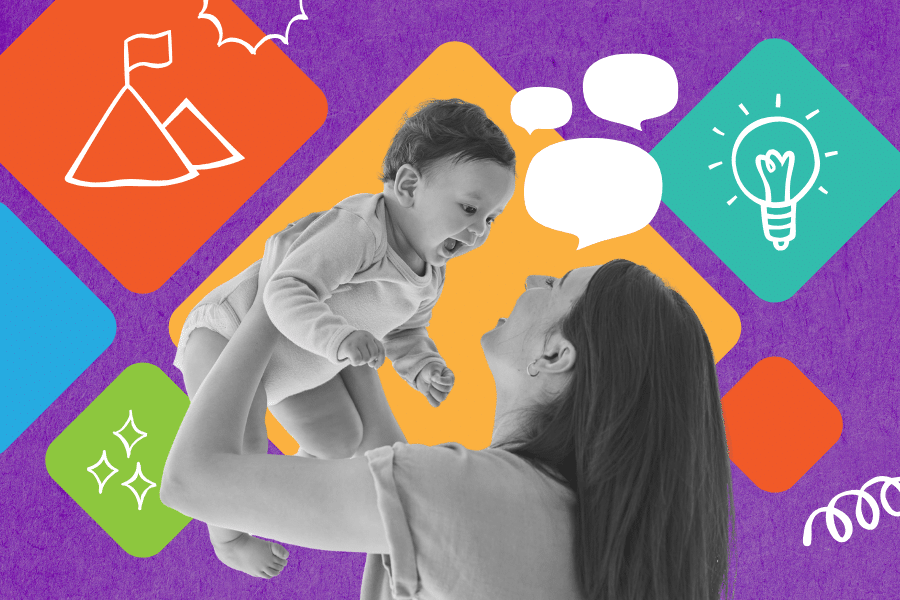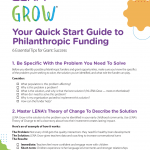Despite lower pay in the early childhood education field, fewer resources, and lack of support, many early childhood veteran teachers stay in the profession. Why is that? What are decision and policy makers missing that can play a huge role in supporting early childhood teacher retention?
According to research from the Frank Porter Graham Child Development Institute, staff turnover hits 30% annually in early childhood education programs. Teachers stay just over two years on average. Turnover is costly to organizations, the children, and the teachers themselves. And teacher retention in early childhood education has become one of the biggest challenges facing programs today.
Money isn’t the only answer.
We know (and studies show) that another answer is joy. When teachers really connect with the children in their care during daily activities and build responsive relationships, joy returns. Children light up. The data proves it works.
Think about the moments when early childhood professionals can see their impact and truly connect with the children in their care. These moments help children learn better, yes. But they also remind teachers why they chose this work in the first place. Research shows these same strategies boost both teacher happiness and child outcomes.
Why Joy Is a Force for Early Childhood Teacher Retention and Success
Child care work sees turnover rates 65% higher than typical jobs. Centers average 30% annual staff departure nationwide. According to the American Pre-K Teacher survey, pre-K teachers earn $7,000-$24,000 less than comparable workers. Money does matter. Centers paying under $10 per hour lose 23.1% of staff yearly, while those paying $25+ lose only 7.5%.
But wages don’t tell the whole story. Passion for the job drives teacher retention in early childhood education just as powerfully.
Researchers have discovered that when early childhood professional development focuses on teacher-child interactions, some pretty amazing things happen. This type of training boosts teacher confidence. It improves their skills and motivation. Early educators stress less, experience fewer challenging behaviors from children, and are generally more joyful. They can support child development better. It creates measurable change in classroom quality.
Maybe teacher well-being and positive adult-child interactions work together like dance partners. When one gets better, the other follows.
What Happens in the Brain and Heart
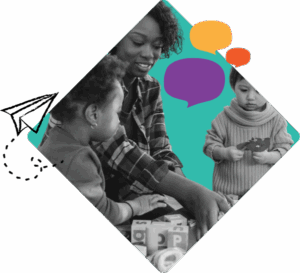
Teachers light up when the children in their care do. And they get almost instant feedback when their interactions with children are successful. A shy child opens up. A struggling learner makes connections. These small victories are fuel for joy and passion for early childhood educators.
Early childhood educators experience stress, depression, and staffing challenges higher than people in many other jobs. Many feel overwhelmed and undervalued. Often, they even must fight to be considered professionals at all!
Investing in early childhood educators through professional development breaks the harmful cycle that traps so many programs. Stressed teachers struggle to develop responsive relationships with children. Children display more challenging behaviors. Teachers get more stressed. And then they leave.
When educators master meaningful positive adult-child interactions (or what LENA calls conversational turns), stress drops and satisfaction soars. Programs nationwide are seeing teachers stay longer and rediscover their passion for early childhood education. All because of this type of professional development.
Why Leaders Should Make Smarter Investments for Early Childhood Teacher Retention
According to the Educational Research Review, 53% of children’s improvement in early childhood educational settings depends on whether their teachers receive quality training focused on interactions. Programs investing in interaction-focused early childhood education professional development (like LENA Grow, for instance) see significant increases in teacher job satisfaction.
Teachers who see measurable progress in their children report higher professional fulfillment. How that progress gets measured is important. If it’s punitive, it’s much less likely to be fulfilling. Fulfillment creates joy. And data becomes fuel for continued passion for the profession.
So, it seems, smart early childhood leaders invest differently. Yes, they advocate and push for higher pay for early childhood teachers and caregivers. But, just as importantly, they invest in dynamic early childhood professional development. Programs with coaching components. Programs that support responsive relationships with children and help teachers reduce challenging behaviors. They invest in professional development proven to help children improve social development and emotional regulation. Programs that support joy.
Because that’s what keeps teachers coming back every day. And when teachers stay, everyone benefits.
Real Stories of Transformation
Across the country, early childhood educators are discovering how small changes in daily interactions can reignite their passion for teaching. These are stories of hard-working, passionate professionals who participated in LENA Grow, our flagship professional development program, are a perfect example of how investing in teachers the right way can restore joy to their job and their classroom.
Rediscovering Story Time
Patricia had been reading to children for 25 years. She thought she knew everything about story time: read the book, ask questions, move on. But when she started using props and connecting stories to real experiences, everything changed. “Story time numbers went way up.”
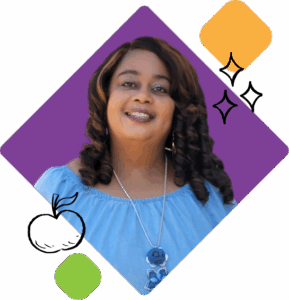
More importantly, children began taking initiative. They started reading to each other and creating their own stories. The shift was visible. You can tell when a teacher has the joy of someone who’s found their calling.
Building Expertise Through Connection
Monique runs a family child care program in her living room, working with children from 4 months to 4 years old. When she started focusing on meaningful interactions, something shifted inside her. “Seeing my progress made me feel like I am expert in language development and in my field. … It was really motivating.”
The daily impact became part of who she was as an educator: “I probably think about the program every day.” Her confidence grew as she watched children flourish through better conversations and connections.
Finding Purpose After Decades
Melenau has taught since 1984, yet she continues discovering new approaches. She said, “As a teacher, you always want to see more out of a child. What else are they capable of? LENA Grow raises the bar, raising how we teach the children: to be more sensitive, to be more compassionate, to develop new learnings to apply. I probably think about the program every day.”
What stuck out to her the most? Simple recognition. “Sometimes,” she said, “just being recognized as a teacher at the preschool level is all the boost we need.”
Investing in Joy and Results
It’s pretty clear that interaction-focused early childhood education professional development delivers results. And those results add up to happier teachers! Programs that prioritize teacher joy improve teacher retention in early childhood education settings. And supporting teacher retention directly advances child development goals.
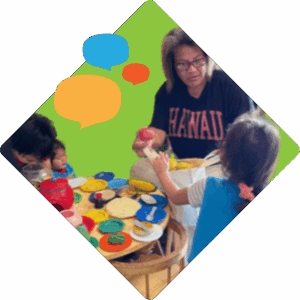
Ready to support early childhood educators better? Start by evaluating teacher satisfaction and interaction quality in your programs. Ask around. Do surveys. Talk with your teachers and caregivers, not just to them. Make it a safe space for real, transparent feedback!
Research professional development options that combine measurable feedback with coaching support. LENA Grow does exactly that! And it’s a data backed, evidence based program with real success nationwide. Budget strategically for programs addressing both teacher fulfillment and child outcomes simultaneously.
When we help teachers rediscover joy in their daily interactions with children, we transform entire learning environments. Children thrive. Families benefit. Communities grow stronger.
Sounds like the evidence is clear. Joy isn’t just a nice-to-have in early childhood education. It’s measurable, teachable, and essential for programs wanting lasting impact on the children and families they serve.
Ready to see what interaction-focused training can do for your program? Learn more about LENA Grow’s evidence-based approach to building teacher confidence and improving child outcomes.
